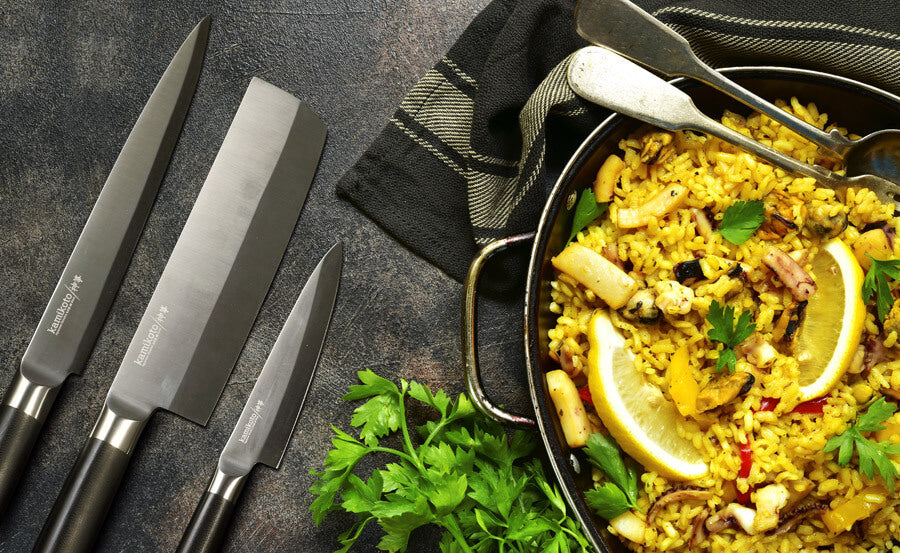
For a tiny nation, Malta produces food that is surprisingly rich, robust and rustic. Over many centuries, the Maltese people cannily absorbed and adapted dishes brought over by invaders to create a cuisine that is full of interesting flavor combinations and wholly satisfying.
What Makes Traditional Maltese Food Unique?
The archipelago of Malta - sandwiched between southern Italy and the North African coast - has been ruled by many over time. The French, Spanish, British, Arabs, Italians and Germans have all had part in controlling the tiny island at one point in history.
During different periods, each nation brought with them their favorite delicacies. Maltese people were quick to envelop and transform these, creating their own bespoke versions. This cultural intermingling of flavors is what makes Maltese food so unique, interesting and enjoyable.
Traditional Maltese food is heavily reliant upon the seasons. It is quite rustic in nature, favoring stews, game meats such as rabbit plus pasta, pastry and fruit-based desserts.
What follows is a highlight of some of Malta’s most famous dishes including an explanation of their flavor profiles and how each one is traditionally made.
What Is Bragioli and What Does Bragioli Taste Like?
One of Malta’s most traditional dishes is bragioli or beef olives. This dish features stuffed and rolled pieces of thin beef steak braised slowly in a tomato-based sauce. The slow cooking time produces a wonderful melt-in-the-mouth consistency.
Bragioli flavors are akin to a rich stew, with strong notes of tomato and herbs. The end flavor profile differs slightly depending on the beef olive stuffing, which can be adjusted to taste.
How is Bragioli Made?
To make bragioli, first cook up a tomato-based pasta sauce using onions and garlic as a base. Tenderize the beef steak by banging them out flat. Make up the stuffing mixture - which is usually a combination of veal mince, breadcrumbs, garlic, bacon and herbs - and then bind with egg. Take a small amount of mixture, place it atop a flattened steak and roll it up, fastening with a toothpick. Place the beef olives in the tomato sauce and slowly simmer for a few hours until soft and tender.
There are a few variations to this dish. These include adding hard-boiled eggs and other fresh vegetables, like peas, towards the end of the cooking time; or by adding hard-boiled eggs to the stuffing. To add another dimension of flavor, the beef olives can also be seared first before making the tomato sauce.
Another interesting way of serving bragioli is in two courses – the first by using the tomato sauce with a serve of pasta and then following with a second serving of the beef olives on their own.
What Is Lampuki and What Does Lampuki Taste Like?
Being an island nation, the Maltese are heavily reliant upon fish. Lampuki is a traditional fish pie, named after the fish found in abundance in the waters surrounding Malta.
As lampuki is a very delicate fish, the flavor of the fish itself is quite light. It therefore is imbued with other flavors through the pie stuffing. These center on a combination of fresh vegetables, tomato puree, capers, sultanas and herbs. The stuffing is then wrapped and baked in a delicate puff pastry.
How is Lampuki Made?
After the lampuki has been filleted, it is gently sautéed in olive oil or butter until just cooked and then shredded into flakes or cut into bite-sized pieces. Onions, tomatoes and garlic are fried off with the addition of chopped vegetables such as cauliflower, carrots, spinach and peas. Herbs such as parsley and mint are added as are lemon zest, black olives, sultanas and capers. The sauce then simmers for about five minutes.
Next, line a pie dish with puff pastry, add the vegetable mixture and then place a layer of fish on top, with a final layer of vegetables on top of this. Finish off with a layer of pastry, brush with egg wash and bake until golden.
What Is Kapunata and What Does Kapunata Taste Like?
Kapunata tastes very much like ratatouille for it is the Maltese take on the French version. While the dish has humble ingredients, it is a staple of Maltese cuisine and is often made in big batches and stored in the fridge to be eat hot or cold when the need arises. The dish features bell peppers, aubergine, tomatoes, olives and onions.
How is Kapunata Made?
All vegetables (as mentioned above) are cut in large chunks. The aubergine is cooked first by mixing with olive oil and then grilled or baked until golden. Next, sauté onion and crushed garlic until translucent, adding the remainder of the vegetables and simmering until soft, adding a small amount of water if the dish is too dry. At this point, the addition of olives, capers and a few tablespoons of tomato paste is required and another five minutes of cooking plus any needed seasoning. It can then be served hot or cold with crusty bread.
What Is Gbejniet and What Does Gbejniet Taste Like?
Gbejniet is the similar in taste and texture to ricotta cheese. It is traditionally made using goat’s milk and can be cooked and consumed in a few ways, from fresh to sundried (giving it a nutty flavor) to salt cured to peppered. Gbejniet is a very important part of Maltese cuisine and it eaten on its own as well as added to other dishes such as pasta or soup to enhance their flavor.
How is Gbejniet Made?
Making ġbejniet requires some skill and practice. The milk must be heated to the correct temperature and then rennet and water added. It then sets for a number of hours, allowing the mixture to coagulate and separate the curds from the whey. The curds are then collected into a special plastic basket called a qwieleb, sprinkled with salt and left in the fridge overnight. In the morning, the ġbejniet is ready and can then be salt cured, peppered or sundried, or simply eaten fresh.
What Is Imqarrun and What Does Imqarrun Taste Like?
Imqarran or imqarrun il-forn is a baked pasta dish. The flavor is quite similar to an Italian Bolognese, particularly as the sauce base is almost the same. This is very popular dish served all over Malta, often on a Sunday for family gatherings.
How is Imqarrun Made?
The first step is to make a tomato-based Bolognese sauce with a combination of beef and pork mince. While the sauce cooks, boil up rigatoni or penne pasta until it is a little under al-dente as it will cook further once baked. Mix the pasta and sauce, add some beaten eggs plus grated cheese. Transfer to a baking dish, top with more grated cheese and bake until golden on top.
This dish is very versatile as it is can be transformed into timpana, another Maltese favorite. To do this, stop after mixing the pasta and sauce and then continue on with the timpana recipe noted below.
Other imqarrun il-forn options:
- Add chicken livers and/or bacon to the mince when making the pasta sauce
- Add peas and hard boiled eggs to the cooked sauce before combining with pasta
What Is Timpana and What Does Timpana Taste Like?
Timpana is a pasta pie. It features a Bolognese or ragu-based sauce combined with cooked pasta and encased in pastry and then baked. The flavor is quite delicious – rich, tomato bathed meat redolent with herbs rounded off by the crunch and buttery goodness of the flaky pastry.
How is Timpana Made?
Timpana begins with the same sauce and pasta as used in the imqarrun il-forn recipe with the chicken livers added during the meat-cooking process. Parmesan cheese, peas and hard-boiled eggs are also added when mixing the pasta and sauce. It is then encased in puff pastry, egg-washed and baked until golden.
What Is Bigilla and What Does Bigilla Taste Like?
Bigilla is a simple broad bean dip but it still manages to deliver a punch of flavor. It is very popular across Malta, with people using it as condiment to accompany salads, crackers or simply eaten on its own. Once cooked, the broad beans are mashed and mixed with a number of other ingredients to create a dip that is creamy and textured with multiple layers of flavors.
How is Bigilla Made?
Wash and then soak the broad beans overnight. Drain and rinse and then in a fresh change of water, boil them until they are soft. Drain off the excess water and mash the beans until they almost a paste but still retain some texture. Add crushed garlic, dried marjoram, mint or basil and olive oil. Season to taste.
Those are just a few of Malta’s most popular dishes. There are many more that are well worth exploring to expand one’s knowledge and culinary prowess.


